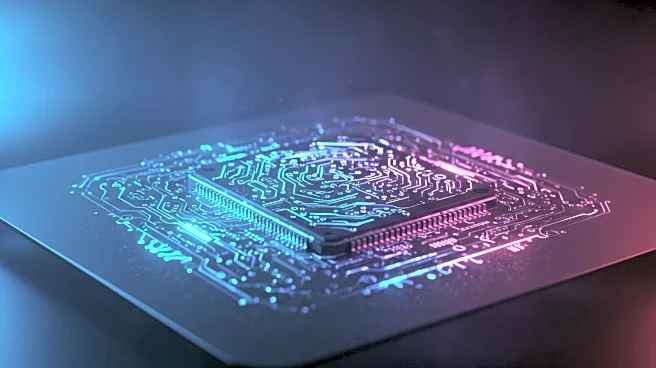What is the story about?
What's Happening?
Researchers have developed a reconfigurable photoelectric memristor (PRM) device that mimics the functions of neurons and synapses, crucial for neuromorphic computing. The device, constructed with a Pd/ZnO/Graphene/SiO2/Si structure, utilizes light to control its switching states, enabling it to simulate both volatile and non-volatile memristor behaviors. This innovation allows for dynamic configuration of neuromorphic devices, adapting to different environments. The PRM device can respond to light at various wavelengths and powers, maintaining stability under continuous illumination, which is essential for applications in artificial neural networks and spiking neural networks.
Why It's Important?
The development of the PRM device represents a significant advancement in the field of neuromorphic computing, which aims to replicate the efficiency and functionality of the human brain in electronic systems. By enabling dynamic reconfiguration, the device offers potential for more adaptable and efficient computing systems, which could revolutionize fields such as artificial intelligence, robotics, and autonomous systems. The ability to simulate neural functions with high precision and stability could lead to breakthroughs in machine learning and cognitive computing, enhancing the capabilities of AI technologies.
What's Next?
The PRM device's potential applications in neuromorphic computing will likely drive further research and development in this area. Researchers may explore ways to integrate the device into existing computing systems, as well as develop new architectures that leverage its unique capabilities. The technology could also attract interest from industries seeking to enhance AI and machine learning applications, leading to collaborations and investments in neuromorphic computing research.
Beyond the Headlines
The PRM device's reliance on light for switching operations introduces new possibilities for energy-efficient computing, as optical signals can be more efficient than electrical ones. This could lead to the development of more sustainable computing technologies, addressing growing concerns about the environmental impact of data centers and electronic devices. Additionally, the device's ability to mimic neural functions may inspire new approaches to understanding and replicating biological processes in technology.
AI Generated Content
Do you find this article useful?











